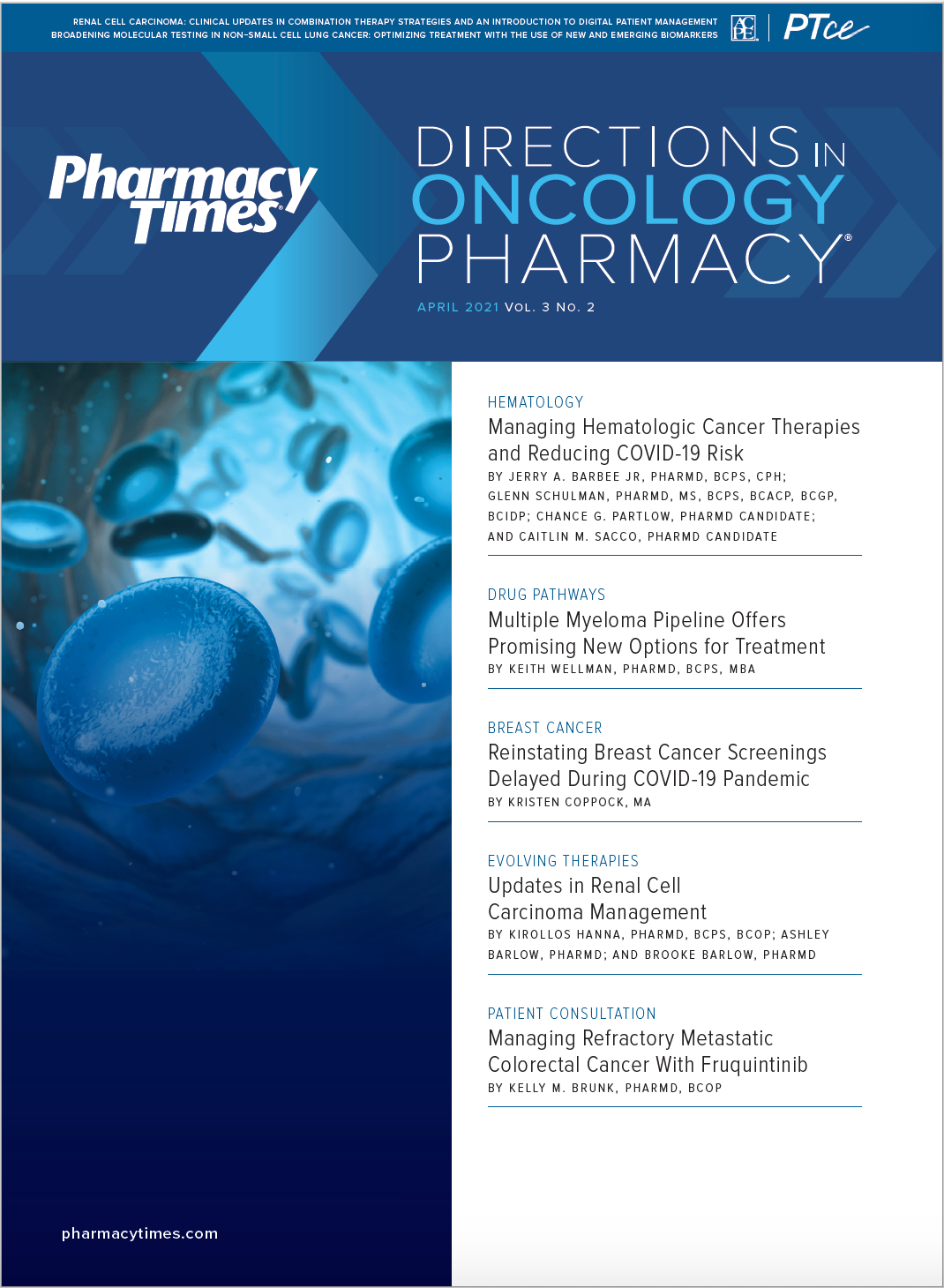Publication
Article
Pharmacy Practice in Focus: Oncology
Selection and Management of PARP Inhibitors With a Practical Approach
Author(s):
For patients with no previous PARP treatment and multiple prior lines of therapy, PARPs may be an appropriate choice.
Poly (ADP-ribose) polymerase (PARP) inhibitors offer new options for patients in multiple lines of therapy. However, the inhibitors’ manageable adverse effects do require pre- emptive counseling and close monitoring, according to Colleen McCormick, MD, MPH, a gynecologic oncologist, during a session at the Society of Gynecologic Oncology (SGO) 2021 Virtual Annual Meeting on Women’s Cancer.
McCormick explained the difference between targeted therapy and chemotherapy in her presentation, emphasizing how targeted therapy uses drugs or other substances to identify and attack specific types of cancer cells with less harm to normal cells. Chemotherapy, on the other hand, uses drugs to stop the growth of cancer cells, by killing them or stopping them from dividing.
Specifically, McCormick explained how PARP inhibitors such as niraparib (Zejula; GlaxoSmith- Kline), rucaparib (Rubraca; Clovis Oncology), and olaparib (Lynparza; AstraZeneca) are used in gynecologic cancers. Their roles include maintenance after first-line treatment, treatment for platinum-sensitive recurrence, maintenance after treatment for platinum- sensitive recurrence, and treatment for platinum- resistant recurrence.
For patients who have not yet received a PARP inhibitor and who have had multiple prior lines of therapy, the inhibitors may be appropriate, especially
if the patients are BRCA positive, in terms of platinum- resistant recurrence. “Treatment for platinum-resistant recurrence is really how we develop the case for these uses in ovarian cancer,” she added.
According to McCormick, for post treatment of platinum-sensitive recurrence, those patients who have completed platinum-based chemotherapy and have not previously received a PARP inhibitor should be considered for PARP maintenance, as all 3 agents are approved for this indication.
In terms of maintenance after first-line treatment, McCormick suggests that all patients with ovarian cancer should undergo BRCA testing. Patients who are BRCA positive should receive olaparib maintenance for 2 years after completion of upfront treatment. For patients with homologous recombination deficiency– positive disease, olaparib plus bevacizumab, and main- tenance for 2 years after completion of upfront treatment is a valid option. For all patients, niraparib maintenance for 3 years after the completion of upfront treatment is reasonable.
PARP inhibitors are monitored through monthly visits to a laboratory with vital signs being checked. After 1 year, this transitions to monthly laboratory visits and quarterly office visits. Reported adverse effects of PARP inhibitors include fatigue, headache, nausea, vomiting, diarrhea, decreased appetite, abdominal pain, and dyspepsia.
REFERENCE
McCormick C. PARP inhibitors: a practical approach to selection and management. Presented at: SGO 2021 Virtual Annual Meeting on Women’s Cancer; March 19-25, 2021.







